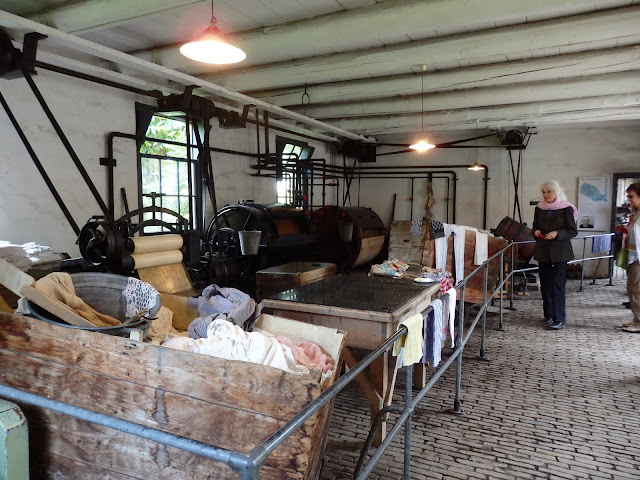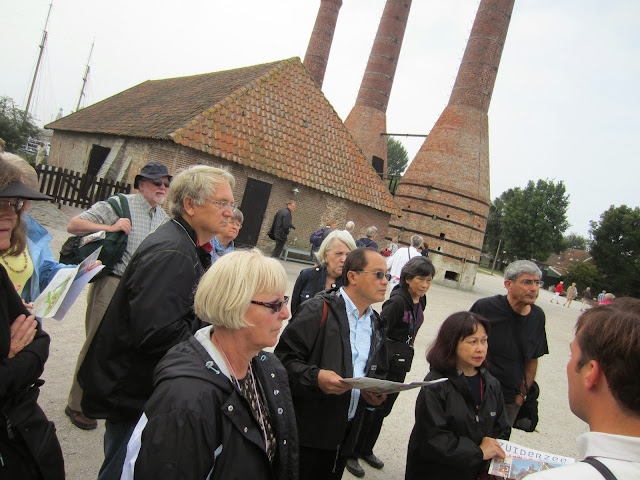After the flower auction, we headed to the Enkhuizen Zuiderzee Outdoor Museum. And to get there, we drove over a lot of water and some interesting bridges to ride a boat to the museum's entrance. While waiting on the dock, Bud, one of our tour mates, wanted a photo of our "fall colors," he said--poor Sam and her bruised eyes.
The museum was founded in 1948 with the purpose of documenting the fishing culture around the Zuiderzee. When cut off from the North Sea in 1932, thus becoming an inland sea, people were concerned that the culture of the former region would disappear completely. These 15 acres on which the museum stands were built on the outside of the seawall separating Enkhuizen from the water on its east side. The little peninsula was created by spraying sand from the seabed.
Hilbren explained that this open-air museum is similar to Williamsburg in the United States. And we did see a few people dressed in period costumes. They were working in some of the buildings and explaining their functions--i.e., the boiler/steam room, with the stoker who keeps the fire burning, which in turn drives the mechanism powering the laundry machines.
Doing laundry in the early 1900s was an amazingly detailed and time-consuming process, which a guy in that building explained. The soap-making, washing, rinsing, bleaching, stretching, pressing--overwhelming!
To find the most suitable houses for the museum village, staff members sent letters to all municipalities around the former Zuiderzee asking "if there were perhaps any buildings, large or small, earmarked for demolition, which could be regarded as characteristic of the former situation on the edges of the Zuiderzee." Many of the municipalities responded positively to this appeal; and only occasionally did the Museum actually have to buy a building. Most were donated.

Various neighborhoods were created in this way: those around the church, the dike buildings, the town canal, and the fishing village, with a small polder between these last two. The Marken neighborhood (based on a copy of the Village of Marken), with the harbor, was the last neighborhood to be created.
Signs in front of each building explained what happened or who lived in the building. It was amazing what information has been culled from history and passed along to those who come after. These kilns burn shells from the North and Wadden Seas to create lime, which eventually is used in the manufacturing of cement.

We wandered and wandered through the little paths, over little foot bridges, and peeked into some shop windows. We entered the laundry, the church, the apothecary, and even flirted with some pigs who came running when I got close to the fence.
Last but not least, of course, the windmill is one of the mainstays of Holland's technological superiority in the Golden Age. They are used in paper-making, hemp-beating (a part of sail weaving), and pressing oil from linseed. In addition, they are indispensable in the impoldering of land or maintenance of the water balance. In all shapes and sizes, these old-fashioned wooden mills have nearly disappeared from the scene.






No comments:
Post a Comment